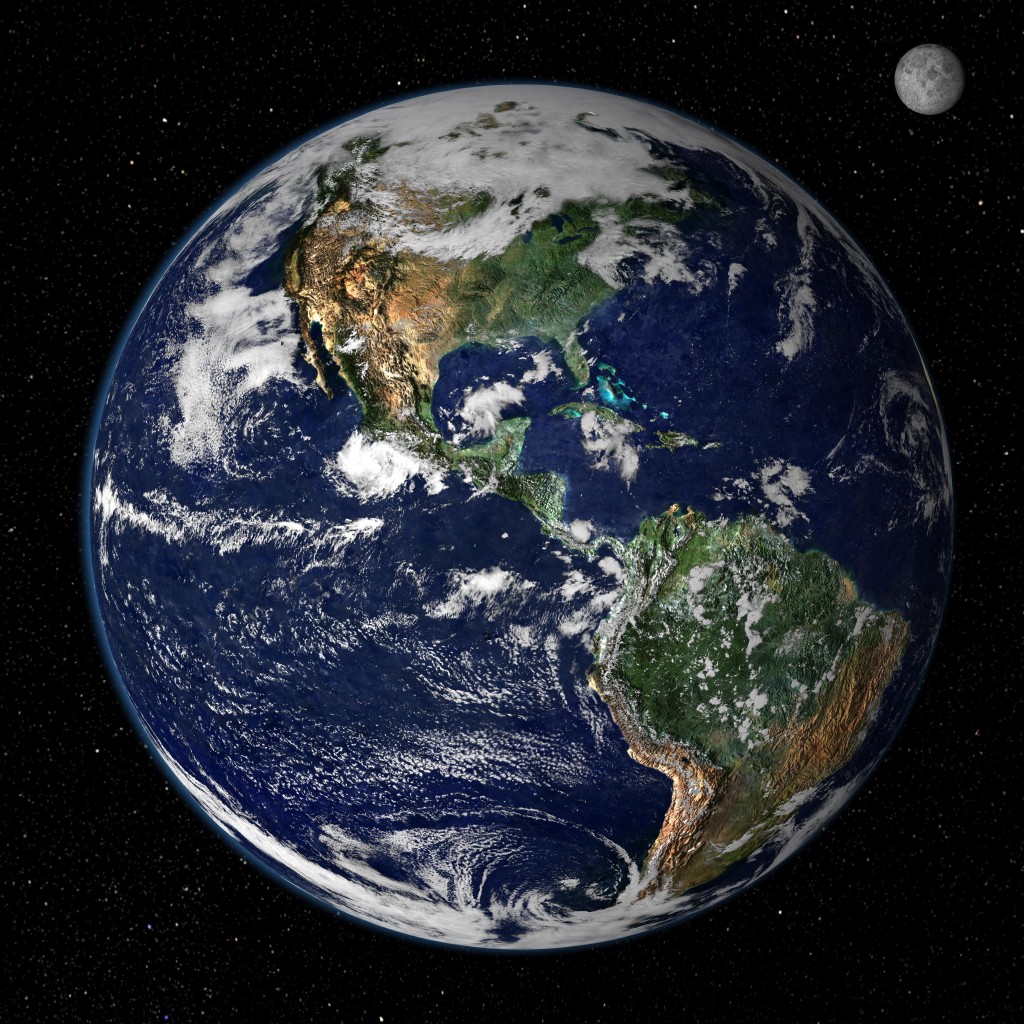
Earth from Space, courtesy of the American taxpayer. Reto Stöckli, Nazmi El Saleous, and Marit Jentoft-Nilsen, NASA GSFC
Tweet
![]()
Earth Day, 2010, I looked to the future on Popular Logistics. In 2009, I wrote about water pollution and agricultural waste in the Chesapeake. Today I am looking at the present and recent past. While a comprehensive look at where we are can be found on the web pages of the World Watch Institute, the New York Times, and the World Factbook of the Central Intelligence Agency, I want to make a few points.
Our energy policy is “when you flip a switch, the juice gotta flow.” It ain’t magic. It’s engineering and classical physics, with an understanding of radioactive fission and decay and a profound lack of long term thinking. It ain’t magic, but it might as well be. But we really need to base our energy policy on an understanding of ecological economics and sustainability.
We’ve had a few problems with nuclear power and fossil fuel in the last few years. Yet, there’s some light on the horizon.
Regarding those problems with fossil fuel …
December 22, 2008, a flood of 1.2 billion gallons of toxic coal ash at the Kingston Steam Plant on the Clinch and Emory Rivers, upstream of Kingston, Tennessee, here or here. April, 2010, a disaster at the Upper Big Branch Mine in Montcoal, West Virginia (here). One of the results of the accident was that Massey Energy, the company that operated the mine, was sued by institutional investors who alleged corporate malfeasance. And then there was the catastrophic spill of 50,000 to 70,000 barrels of oil per day into the Gulf of Mexico for three months. These, I said, were the “Fossil Fuel Trifecta of Disaster.” My series began with “Fossil Fuels and a Walk on the Moon.” BP’s stock – and “market capitalization” was cut in half. While it has since recovered somewhat, it is still well below the level immediately prior to the spill. BP has also lost good executives to the nascent biofuels industry.
Also back in 2009, I started covering the “Purgen Plant,” a “Rube Goldberg” design for a coal plant with carbon sequestration, here. The technology is incredibly expensive – $16 to $18 per watt – and spectacularly stupid. The plan is to use 25% to 40% of the output of the plant to capture 90% of the carbon, then compress it and pipe it 70 miles along the sea floor, then bury it 1 mile beneath the bottom of the ocean. It will cost the taxpayers billions, as long as nothing goes wrong.
More recently I’ve been writing about the unfolding earthquake – tsunami – nuclear disaster in Japan beginning with Earthquake, Tsunami, and Energy Policy and concluding with Nuclear Power, What Future? But there are two important points – under “normal” conditions nuclear power produces less radioactive waste than coal, and the wastes from nuclear power plants are regulated. Under real world conditions, nuclear plants leak tritium and other radioisotopes into the biosphere. Look to this blog for more posts on this in the future.
Yet, there is some good news.
- Cape Wind, LLC finally got the permits they need to build America’s first offshore wind farm (see Cape Wind, Leadership and Vision).
- The solar energy industry is strong in New Jersey and California, and expanding.
- The FDA expects America’s rural electric coops to continue to move into renewable energy.
- Bright, dedicated, passionate and beautiful people are thinking about sustainability in places like Bainbridge, Columbia Earth Institute, the Fowler Center at Case Western, Marlboro College, the Presidio, UVM.
- Large institutions such as Deutsche Bank – one of the 10 largest banks – and Zurich Reinsurance are concerned about climate change. Click here and here. concerned about climate change.
In addition to my work on this blog, my song “Sunbathing in Siberia” may not be “American Idol” fare (and that’s part of the problem) but my friends dig it, and my “Earth Energy Haikus” were posted on Amida’s web site. The problems we write about on Popular Logistics are complex “systems” problems. They have developed over the last 50 or 100 or 200 years. They can’t be fixed with a magic wand. We need to look long and hard at various paradigms, such as energy and consumption, and how they need to shift. In his lectures, his book, “Sustainability by Design” and on his blog, John Ehrenfeld defines “Sustainability” as “Flourishing forever.” Doing it is the conundrum.
—
The image of the “Blue Marble” was created by Reto Stöckli, Nazmi El Saleous, and Marit Jentoft-Nilsen, at the Goddard Space Flight Center, NASA GSFC. It is described here. “This true-color image shows North and South America as they would appear from space 35,000 km (22,000 miles) above the Earth. The image is a combination of data from two satellites. The Moderate Resolution Imaging Spectroradiometer (MODIS) instrument aboard NASA’s Terra satellite collected the land surface data over 16 days, while NOAA’s Geostationary Operational Environmental Satellite (GOES) produced a snapshot of the Earth’s clouds.”